Shandy Hall Moths
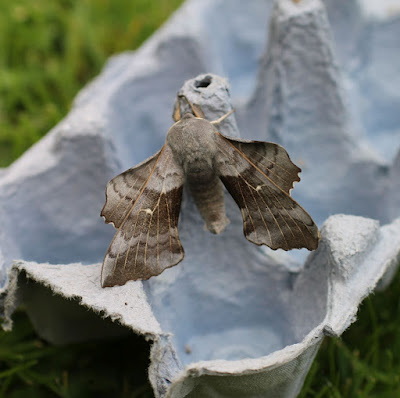
17 May 2020
17 May 2020 – Return
Poplar Hawkmoth (Laothoe populi) Cold night after cold night made setting the moth trap a pointless exercise – nothing was to be found. Apart from a group of Bee Moths (Aphomia sociella) emerging from a winter spent in a bee or wasp nest; and a Streamer (Anticlea derivata) sunning itself on a wall in early April, […]

27 September 2019
27 September 2019 – National Moth Night
Large Wainscot (Nonagria pilicornis) If I hadn’t turned the camouflage tent upside down this morning I would certainly have missed seeing this freshly emerged Large Wainscot drop onto the grass. At first I was sure I hadn’t seen a wainscot moth this size before but I soon discovered that it had been seen once before at Shandy […]
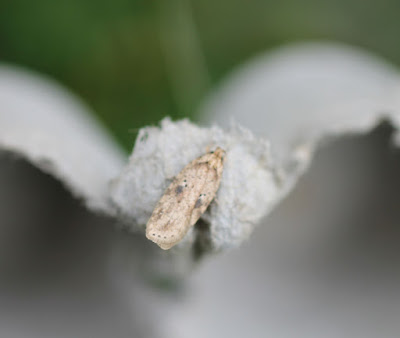
19 September 2019
19 September 2019 – Some of the Usual Suspects
(Agonopterix arenella) Agonopterix arenella is not an easy moth to see as it is quite small. It is also not straightforward to identify as it is similar to Agonopterix alstromeriana (uncommon) and Agonopterix yeatiana (very scarce). Agonopterix assimilella is another from the same family which is also uncommon. Agonopterix arenella has been identified once before in the […]
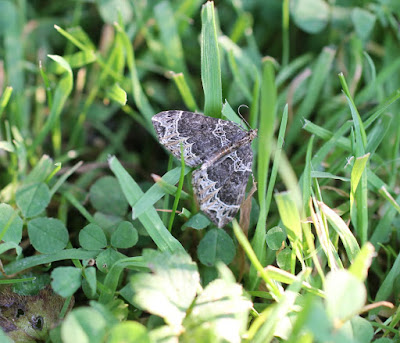
27 August 2019
26 August 2019 – Winnowing Fan
Small Phoenix (Ecliptopera silaceata) I had to chase this Small Phoenix (Ecliptopera silaceata) across the lawn as it had taken off from where I was planning to photograph it in search of sanctuary. Fortunately the spotted flycatchers have had their two broods and have now left for Africa otherwise there would have been one less […]

18 August 2019
18 August 2019 – Goths and Magical Numbers
Feathered Gothic (Tholera decimalis) Click on the photograph of the Feathered Gothic (Tholera decimalis) and the enlarged image will show the feathery antennae which confirm that this is a male of the species. Not an uncommon visitor to this part of Yorkshire this muddy-coloured (from the Greek tholeros) insect comes to light as an adult […]
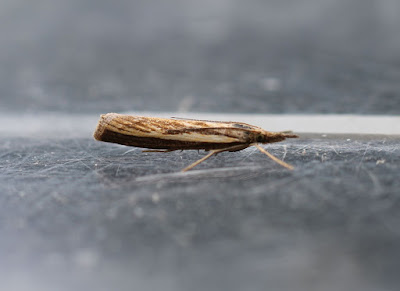
13 August 2019
13 August 2019 – A Palette of Browns
(Agriphila tristella) There were possibly two hundred moths in the last trap but the number of different species was limited. 20 or so Mother of Pearl (Pleuroptya ruralis) moths most of which were released into the bushes as soon as possible to prevent the less boisterous moths from being disturbed; then an army of Underwings […]

1 August 2019
1 August 2019 – Food for Bats
Chinese Character (Cilix glaucata) The Chinese Character (Cilix glaucata) can usually be found tucked into a space that it seems to create all for itself. Whilst the Mother of Pearls, the Underwings and the Elephant Hawk-moths are whirring around, this bluish-grey (glaucus) little moth remains serene and undisturbed imitating a bird-dropping. The cilix part of […]

27 July 2019
27 July 2019 – Dr Johnson’s Omission
Dingy Footman (Eilema griseola) If you had to identify a Dingy Footman (Eilema griseola) you might expect it to be a little dingier, a little dirtier, than the example photographed above. The word ‘dingy’ seems to have originated in south-east UK where it was a dialect word ‘common in speech but not in writing’. Dr Johnson […]

17 July 2019
17 July 2019 – Moths go to School
After the moth release. An early morning inspection of the trap was encouraging and there were a number of colourful species that might interest Year 6 primary school children. Persuading the moths into the collecting tubes and then attaching a label with the common name written on it seemed the best way to give the […]

11 July 2019
11 July 2019 – A Footman Awaits
Common Footman (Eilema lurideola) ’In early use, a runner in attendance upon a rider of rank;… a servant who ran before his master’s carriage, called more fully a running footman.’ The Oxford English Dictionary also has ‘A man-servant in livery employed chiefly to attend the carriage and wait at table.’ It is the second […]

1 July 2019
1 July 2019 – National Garden Scheme Moths
(Pseudargyrotoza cowagana) Not a name to forget. Certainly a very long name for a very small moth. What secrets can be unlocked by finding the derivation of the scientific name? ‘Pseudos’ is the Greek for ‘a falsehood’ and the ‘argurotoxos’ refers to Apollo – the bearer of the silver bow. He also had a golden […]
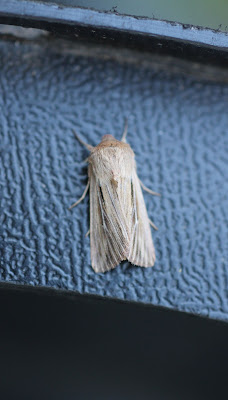
22 June 2019
22 June 2019 – Cold Moon
Shoulder-striped Wainscot (Mythimna comma) The moth evening arranged for early June was a complete wash-out. The gardens open in the evenings and a moth identification and release has been part of the evening for near enough ten years now. June is such an unpredictable month and the rain and wind this year seem to have reduced the […]
Recent Moths
- Rise of the AI Naturalist
- Best Moths for a Haunted Abbey
- The Real and Fake Deaths of Moths
- The Colonizers of Yorkshire
- Glamour in the Dark: Two Newcomers Arrive at Shandy Hall
- 25 July 2023 – Collective Noun for Hawkmoths
- MOTH LIST to August 2023 with links
- 28 July 2023 – TRIPLE New Species Alert!
- 18 July 2023 – A Golden…Plusia!
- 13 July 2023 – Arts and Sciences
- 10 July 2023 – Rise of the Yellow Underwings
- 4 July 2023 – Cold-weather Catch






